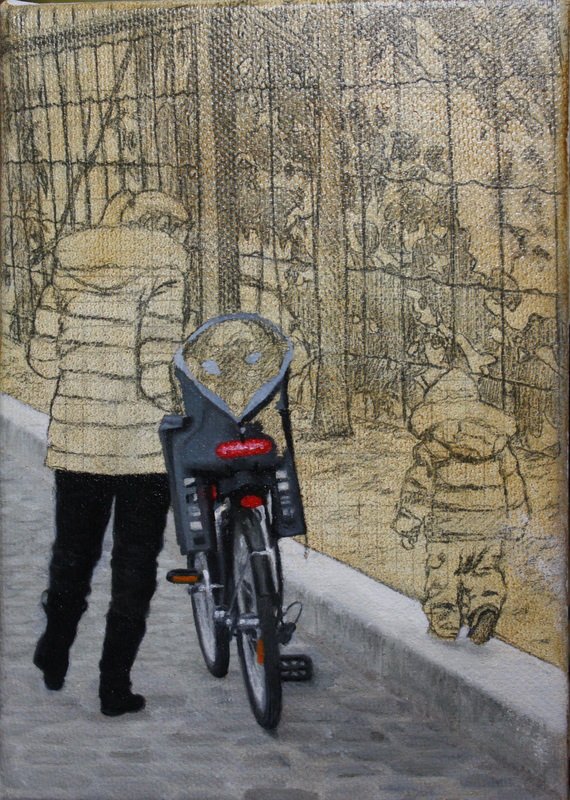Mixing oil paint video + in progress painting
I re-mixed some of my older paints today and made a short video of the process. Because I only use a tiny dollop of each color every day, I make just enough paint to fill canisters that are about the diameter of a quarter. There's no need to make more than I'll use in a couple month's time, and that way I continually make myself freshly mixed batches of color.
I find that with certain colors it's better to add a little extra linseed oil or the paint develops a crust after a few weeks, rendering it unusable and a waste. The extra oil just means that I need to stir the paint every so often to prevent it from settling and congealing. The texture is like commercial oil paint diluted with linseed oil to make it creamier and less pasty.
Every color mixes differently. Titanium white pigment sinks into the oil almost immediately, so it is very easy to overdo it and make it too milky. It can still be usable like this, but it's a slippery slope. Colors that you've mixed with a highly diluted white may seem the right hue when you apply the paint, but it can dry much darker and you may waste time having to go back and fine tune the luminosity. On the other hand, yellow ochre takes longer to absorb the oil, so you have to be patient and allow the pigment to catch up while mixing. You can see that I added oil to the white only a few times and quite sparingly, while with the yellow I added it incrementally and over a longer period of time. The white ends up being light and whippable, while only toward the end does the yellow reveal all the oil I've added, shifting to a heavy, soupy consistency.
Although I can control the outcome to an extent, the consistencies are largely inherent in each pigment's properties. So for instance, cadmium red tends to be very easy to mix and turns out almost the consistency of soft butter. Ultramarine blue is the opposite. It is definitely the hardest to mix and the most difficult to keep. The pigment tends to dissolve and float in the oil almost instantly, but as soon as it goes in the canister it separates and hardens at the bottom like a cake of cement. It requires a lot of upkeep and constant remixing, though luckily it is very potent and it doesn't take much to do the job when mixing with other colors.
Here's the shorter version with white.
A little more painting nerd talk, for the last two years I've been using pigments from Sinopia Pigments, a company based out of San Francisco. They have a great selection of high quality pigments and binders. I invested roughly $100 in my current palette of 13 colors and cold-pressed linseed oil from Sinopia back in 2011, and I've only recently run out of yellow ochre and white. Using pigments is a very cost effective way to be a painter because you typically get more colors to choose from, the pigments are pure and higher quality, and you can hold onto a jar or bag for years at a time. You can also make watercolor with the same pigments and gum arabic diluted in water. Even egg tempera, wax, or acrylic paint if that's your bag. Of course, my paintings are pretty small, so I can get by on a 75g jar ($20.00) of cadmium red medium for years, whereas larger-scale painters might need a 500g bag ($85.00) for it to last as long. Cadmium red is my priciest color though, so don't let that scare you. A 75g jar of yellow ochre can start as low as $8.00 and 500g at $17.00.
I'd look into Kremer Pigments as well, which is based out of New York City (and was featured in the Radiolab about color!) I once ordered some Cellulose glue and Damar gum from them and received both only a couple days later. Their prices run about the same as Sinopia, and because they are on my side of the country, I can probably expect them to arrive a little sooner than Sinopia if I'm in a pinch. I did cave and pick up a cheap jar of titanium white at Utrecht recently, though I wouldn't recommend Utrecht for all your pigments. The stores don't generally carry any pigments beyond your basic rainbow.
Anyway, the above paint will be going on the below painting. The foreground is very wintery but the background will be springy. Stay tuned.
